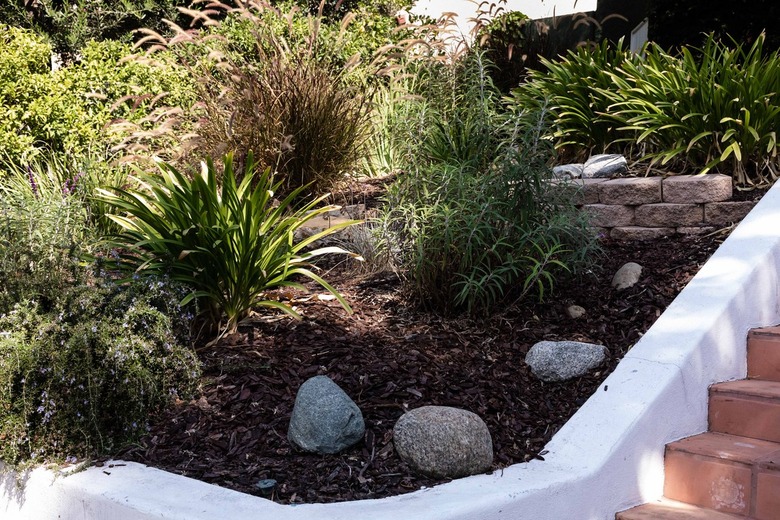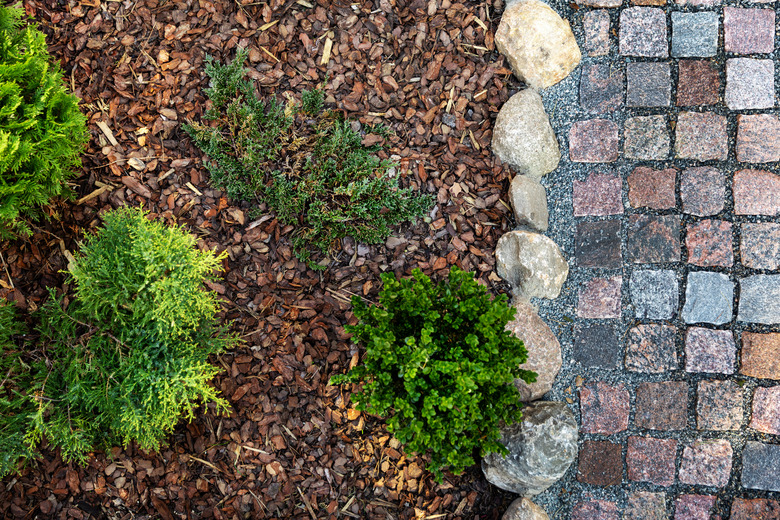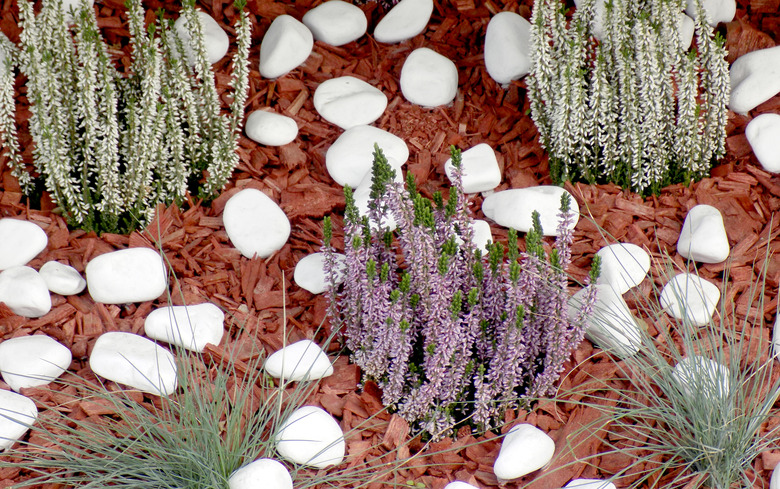Landscape Mulch: How Much To Buy, How To Use It, And Other Tips
We may receive a commission on purchases made from links.
Mulch offers an excellent way to keep weed growth at bay while helping to maintain moisture in a flower bed or around a tree. While you could just apply mulch as you wish and still notice some benefit from it, minding a few mulching do's and don'ts maximizes the effectiveness of your landscaping efforts — and also gets you some bonus curb appeal. Here's what you need to know about buying and using landscape mulch.
Tips for Buying Landscape Mulch
Tips for Buying Landscape Mulch
If you only need a small amount of mulch, such as for one recently planted tree sapling, it makes sense to buy mulch by the bag rather than in bulk. One key difference between buying it by the bag and buying it in bulk is how the mulch is measured. Bagged mulch is sold by the cubic foot, with the typical bag holding 2 cubic feet of mulch. Bulk mulch is sold by the cubic yard, with 1 cubic yard the same as 27 cubic feet or 13.5 bags if each bag contains 2 cubic feet of mulch.
Bagged mulch is usually more expensive by weight, but for small projects in various areas of the yard, bags are easier to manage. Bulk mulch is often delivered by a truck unless you have the means to haul it yourself. The mulch supplier dumps a pile of mulch in your driveway or wherever you choose, provided that the truck has access. Be prepared to shovel mulch into a wheelbarrow and haul it to areas of your yard, but be aware that this is a bit labor-intensive and could result in a sore back.
A mulch supplier may also charge for delivery, so be sure to ask about the delivery fee if you're getting a quote for mulch. Expect to spend an extra $50 or so for delivery, although this may vary based on your region and how far away from the mulch supplier you live. Actual mulch prices vary depending on the type and quality of the mulch, but plan on spending about $3 per bag of 2 cubic feet for budget-grade wood mulch or up to $7 per bag for a quality hardwood or dyed-wood mulch.
If you're buying in bulk, budget-quality mulch goes for less than $25 per cubic yard, while top-grade cedar or cypress mulch costs around $45 per cubic yard. To figure out the price comparisons for the same mulch in bagged or bulk form, multiply the price of a 2-cubic-foot bag by 13.5 to figure out how much the bagged mulch actually costs per cubic yard.
How Much Mulch to Buy
How Much Mulch to Buy
Now that you have an idea about pricing, take a look around your yard, noting all the places you'd like to use mulch. Are you planning to apply a layer of mulch in garden beds or looking to use it around the entire landscape? Once you decide, multiply the length and width of each flower bed to get its square footage. For irregular shapes, break down the areas into smaller, more-regular portions, such as a small rectangle in the middle and a larger rectangle at each end. Keep things simple by estimating the square footage based on length or width for oval-shaped areas.
For a cohesive look, plan on applying the same mulch in several areas around the yard, such as around three trees and in two flower beds in front of the house. This generally looks better than using mulches of different colors that are visible from the same vantage point. Once you've measured the square footage for each area, add the numbers together to get the total square footage.
A cubic yard of mulch spread 1 inch deep will cover 324 square feet, but you'll probably need more than 1 inch of depth. Calculate how much mulch you need to buy by multiplying the desired mulch depth, such as 2 inches, by the square footage total you've measured for all the applicable areas combined. Divide the new number by 324 to determine the total yards needed.
Tip
It's better to order too much mulch rather than too little, as any extra can be applied where needed and as needed. Apply the first batch in early spring and then add more as you need it or in fall during a garden cleanup project.
Landscape Mulch Application Tips
Landscape Mulch Application Tips
The correct amount of mulch to use in any area depends on the mulch type, where you're spreading it, and whether it's the first time you've used mulch in that area. Around trees and shrubs, apply 3 inches of mulch, on average, for the first application. Apply the mulch in an even layer around the base of the tree, adding an extra inch of depth around the outer perimeter so it looks like a ring around the tree.
Mounding mulch against a tree trunk can promote rot, insect issues, and diseases. This is one of those mulching don'ts that is unfortunately a common sight. Just be sure to pull the mulch back about 6 inches from tree trunks. As for flower and garden beds, an even layer that's 1 to 2 inches deep is generally sufficient.
Another big mulching don't is applying too much mulch to an area, and this goes beyond mounding mulch around trees. If the mulch is too deep even in a flower bed, it could cause shallow root growth that ultimately harms the plants.
What About Landscape Fabric?
What About Landscape Fabric?
While plastic weed-barrier cloth and landscape fabric each has its place for certain types of garden projects (such as underneath a pea gravel pathway), they're not needed before applying mulch. Nonbreathable materials, such as plastic, generally kill any plant life underneath, which is great for weed seeds but not so great for a garden and its soil. This type of barrier also prevents water from soaking through to the ground beneath, which could cause runoff issues elsewhere.
Even breathable landscaping fabric isn't ideal beneath wood-based mulch. This type of mulch is supposed to break down over time, and as it does, it adds nutrients to the soil. The nutrients don't seep down to the soil the way they should when any type of landscape fabric or weed barrier is involved. These materials also prevent earthworms from working through the soil, and earthworms are a great benefit to any garden, flower bed, or yard as they help keep the soil from becoming compacted.
The Problem With Dyed Mulch
The Problem With Dyed Mulch
While dyed mulch allows for more color options than natural mulch, it isn't always a great idea for the environment. Many dyed-mulch companies use reclaimed and recycled lumber as the wood source and then add a dye for a uniform appearance. While recycling and repurposing anything is generally a good idea, that's not always true in this case.
Much of the lumber used for dyed mulch comes from used pallets, demolition sites, and similar sources. These woods are often contaminated with toxins that can leach into the soil and into waterways when used as mulch. Some of the chemicals, such as arsenic, can be quite harmful.
If you really prefer a dyed mulch in a specific color, look for a brand certified by the Mulch & Soil Council. This group tests garden products for specific wood contaminants that are generally not good for the environment. A certified mulch means the mulch does not contain these toxins.


